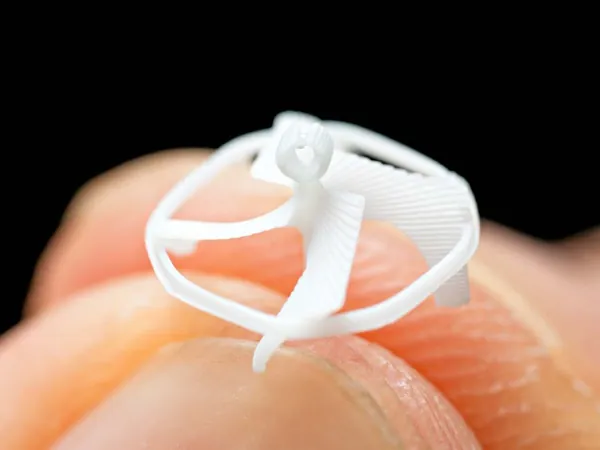
UC Berkeley's Groundbreaking Tiny Battery-Free Flying Robot: A New Era of Micro Drones!
2025-03-31
Author: William
Introduction
Imagine a future where robots don’t buzz and whir but glide silently through the air, operating more like nature’s most efficient creations. UC Berkeley has just unveiled a stunning innovation: the world's smallest battery-free flying robot, weighing in at a mere 21 milligrams—lighter than a honeybee! This remarkable micro-robot doesn’t rely on traditional batteries; instead, it harnesses the power of magnetic fields to take flight.
Innovative Design
This tiny marvel operates with a unique two-magnet system, serving as both its propeller and flight controller. By using externally applied magnetic fields, the robot can spin its magnets to generate lift and precise maneuverability, all without the cumbersome weight of batteries. Watching it soar is a mesmerizing experience, akin to observing the laws of physics in action—a true testament to engineering ingenuity!
Revolutionary Implications
Why is this development so revolutionary? Historically, robots at this scale have struggled due to the prohibitive weight of batteries, which thwarted attempts at effective insect-scale flight. UC Berkeley’s ingenious design sidesteps this dilemma by using an external power source, making it possible for the micro-robot to hover, dart, and navigate tight spaces with unprecedented efficiency.
Biomimicry in Action
The robot's resemblance to its biological counterparts is astonishing. Much like bees pollinate flowers, this flying marvel can be directed to interact with minuscule targets with remarkable accuracy. Such a capability opens up exciting possibilities for practical applications in areas such as artificial pollination, environmental monitoring, and even search-and-rescue missions in cluttered wreckage.
Size and Accessibility
Measuring just 0.9 centimeters in diameter, this robotic wonder is over three times smaller than its nearest competitor in the flying micro-robot arena. This significant size advantage allows the robot to access and explore confined spaces that larger drones simply can’t enter—think ventilation shafts, collapsed structures, and intricate machinery. However, while the current version showcases incredible potential, its reliance on powerful external magnetic fields currently limits its deployment to controlled lab environments.
Future Prospects
Researchers at UC Berkeley are already looking beyond this breakthrough, envisioning even smaller versions that can utilize weaker electromagnetic fields or even radio waves to sustain flight. Imagine a future where swarms of these micro-robots operate together like the forces of nature, working cohesively like ants or bees to conduct complex tasks.
Conclusion
Importantly, this achievement is just one facet of UC Berkeley's exploration into biomimicry. The same team has previously developed innovative cockroach-inspired robots that can navigate under obstacles and withstand significant pressure, as well as cooperative micro-robots capable of swarming. This new project stands out for its simplicity, utilizing no sensors, wires, or batteries—just a brilliant application of magnetism.
As the world embraces new technological frontiers, UC Berkeley’s smallest battery-free flying robot is not just a whimsical creation; it’s a glimpse into the future of robotics, merging natural inspiration with cutting-edge engineering to reshape the way we interact with our environment. Stay tuned for how this pioneering technology could redefine our approach to robotics and automation!









 Brasil (PT)
Brasil (PT)
 Canada (EN)
Canada (EN)
 Chile (ES)
Chile (ES)
 Česko (CS)
Česko (CS)
 대한민국 (KO)
대한민국 (KO)
 España (ES)
España (ES)
 France (FR)
France (FR)
 Hong Kong (EN)
Hong Kong (EN)
 Italia (IT)
Italia (IT)
 日本 (JA)
日本 (JA)
 Magyarország (HU)
Magyarország (HU)
 Norge (NO)
Norge (NO)
 Polska (PL)
Polska (PL)
 Schweiz (DE)
Schweiz (DE)
 Singapore (EN)
Singapore (EN)
 Sverige (SV)
Sverige (SV)
 Suomi (FI)
Suomi (FI)
 Türkiye (TR)
Türkiye (TR)
 الإمارات العربية المتحدة (AR)
الإمارات العربية المتحدة (AR)